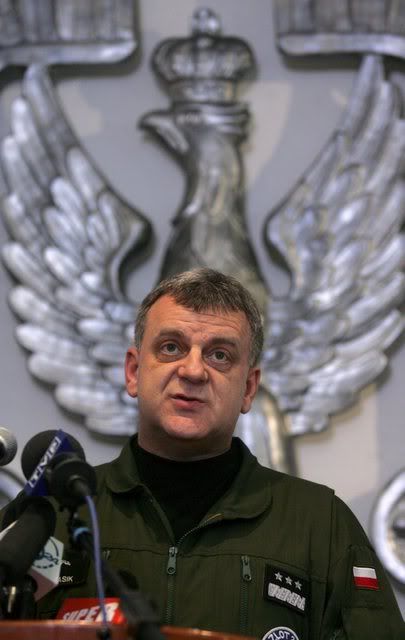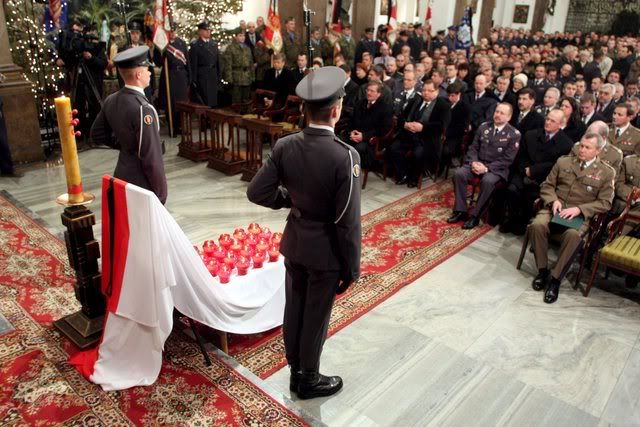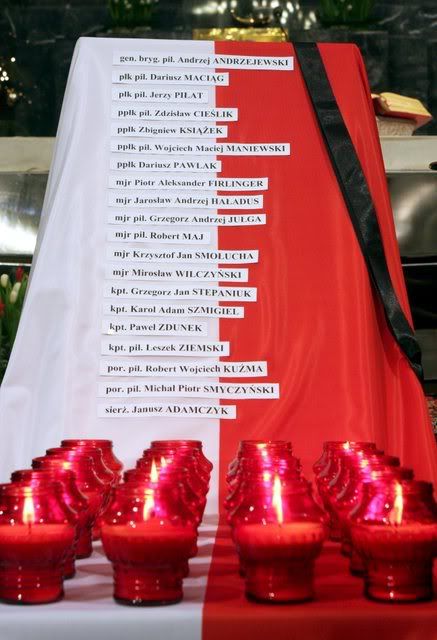senojekips
Active member
^^ I must agree, a very pleasant change from all of the technical stuff ^^
Great shooting with the APDS , what a group!
Great shooting with the APDS , what a group!

Polish border guards Grzegorz Marciniak (L) and Ireneusz Horszczaruk patrol Bug River, along the Poland-Belarus border near the east Polish village of Dolhobrody, in early December 2007.


Polish border guards Grzegorz Pawroz (L) and Ireneusz Kurowski use quads to patrol along the Poland-Belarus border near the east Polish village of Dolhobrody, in early December 2007.

Pilots Ryszard Jamrozek and Andrzej Stankiewicz chat before their morning patrol border helicopter patrol in early December 2007.

Polish border guards patrol along the Poland-Belarus border near the east Polish village of Dolhobrody, in early December 2007.

Polish border guards patrol along the Poland-Belarus border near the east Polish village of Dolhobrody, in early December 2007.

Polish border guards patrol along the Poland-Ukraine border near the east Polish village of Ustrzyki Górne, in early December 2007.

Border guards Miroslaw Bogun and Piotr Dumicz (L) patrol the border with Ukraine on the Bug river, near the east Polish village of Wola Uhruska, in early December 2007.
Last Hawks flew in this year
2007-12-12
On Wednesday, at 1625 hours, two last airplanes F-16 to be delivered this year, have landed at the airport of the 31st Air Base in Krzesiny.
The planes, numbered 4041 and 4061, are the one-seat versions. Altogether there are 33 F-16 fighters stationed at the 31st Air Base - 23 single seat "C" versions, and 10 double seat "D" versions. One of the planes, delivered on November 22, number 4085, is destined for the 10th TAS in Łask.
These are the last planes that have been delivered to Krzesiny this year. There are also one of the last training flights executed in year 2007. According to plan, next week, during the night shift of flights on F-16 the pilots will say farewell to the year 2007. The training with resume at the beginning of the year 2008.






Text: CAPT Waldemar KRZYŻANOWSKI
Press officer of the 31st Air Base
Photos: Maciej Nowak










.gif)


Great photos. Polish equipment looks very much up to date.
Here is a list of new things that we can expect in 2008 (new equipment, prototypes, designs, projects) in Polish Armed Forces. Of course this is not a full list but it will give a overall look on what is going on in our Army.
Polish Army (Land Forces):
"Rak" (crayfish), In 2008 there should be a functional model of this new 120mm mortar (pre-prototype).
"Homar" (lobster) WR-300 – Langusta (crawfish) with MLRS/ATCMS packet (new long range 300km rocket artillery system).
"Krab" (crab) - 155mm self-propelled howitzer:
- Works on precision munitions.
- Orders on Krab’s
- Logistic transporter on Jelcz 8x8 chassis ?
Rosomaki (wolverines) – Polish AMV Patria:
- WEM (Medical Evacuation Vehicle) probably 2 variants so-called fast and final.
- Spike (Man portable fire-and-forget anti-tank missile) transporter.
- Recon vehicle.
- Integration of Spike with Hifist turret or completely new turret with integrated Spike.
- Further works on installing Szerszen (hornet) active protection system on Rosomak ???
"Ryś" (lynx) based prototypes:
"KRRI" - wheeled engineering recon transporter
"KTWI" - wheeled engineering support transporter
"TUR-2" (aurochs) - LOSP-5 standard
"ŻUBR" (European bison) - LOSP-10 standard (MRAP class).
- Interventional buying of LOSP (Lightly Armored Patrol Vehicle).
- Mysterious new Polish 4x4 vehicle
AA systems
- Programmable ammunition for "Loara" AA System ?
- More "Biała" AA Systems (heavily modernized shylka) ?
- "San" (towed AA gun) – further works ?
- "KUB" (mobile surface to air missile) with Sea Sparow/AIM-120.
- "Poprad" AA system – final configuration for Polish Army ?
- "Wróbel II" naval AA system; modernization and integration witch "Grom" rockets.
Firearms:
- Pistolet Wojskowy (Military Pistol) wz 2008r ???
- Younger brother of ALEX sniper rifle 8,6mm x 70mm (338 Lapua Magnum).
- New variant/modernization of 7,62 mmwz.2001 (UKM-2000) machine gun.
- 12,7mm gatling gun for "Głuszec" helicopter.
- Further works on automatic grenade launcher GA-40 ??
- Introducing STAO-40 to the Polish Army ?
- New 40mm grenade launcher with programmable ammunition.
- Further Works on Polish Future Soldier – project "Tytan" (titan).
Air Force
- New LIFT (lead-in-fighter trainer) aircraft
- Delivery of modernized Orlik TC II two seat trainer and probably TC III prototypes.
- Tender offer for new VIP planes
- Continuation of Narodowy Program Śmigłowcowy (National Helicopter Program).
- Delivery of 2 new "Sokol" helicopters in VIP variant.
- Further deliveries of "SW-4" light single-engine multipurpose helicopter
- Further deliveries of Casa C-295M tactical military transport aircraft
- Further deliveries of "Bryza" STOL transport and patrol aircraft
- Modernization/upgrading of MiG-29 ???
Army Air Force and Navy Air Force
- Deployment of 4 Mi-17 and 4 Mi-24W to Afghanistan (after upgrading and modernization).
- More "Głuszec" helicopters (modernized Sokol)
- Further works on Bryza-Bis (maritime patrol and reconnaissance variant)
Polish Navy
- Further deliveries of Orkan class rocket warships with RBS-15 fire-and-forget anti-ship missiles
- Further development of Gawron class corvette
- Beginning of Kormoran II (mine hunter) program
Oh come on Fox
First of all aircraft carriers are way too big to operate on the Baltic Sea; second - we don't need any.

Oh come on Fox
First of all aircraft carriers are way too big to operate on the Baltic Sea; second - we don't need any.

First MEV Rosomaks from WZM delivered to MoD
First 6 out of 31 scheduled Medical Evaluation Vehicles, built on the Rosomak's chassis, have been delivered to MoD by the end of December last year. Formal takeover of the vehicles took place on January 9 2008, after trials in WITPiS in Sulejówko and completion of requested corrections. The remaining 25 vehicles are to be delivered in the years 2008-2010.

One of the first six medical evacuation vehicles Rosomak-WEM, delivered to MoD at the beginning of January. Photo: WZM
Rosomak-WEM is designed to use at the battalion and mechanized company (motorized, tank) level. Its functional spec is:
Its crew is made of four soldiers: commander - paramedic, two nurses and a driver - mechanic.
- collection of injured from the battle field, in direct contact with enemy, and their evacuation to a battalion dressing post
- providing first medical aid by a paramedic and a nurse by dressing the wounds and traumas and maintaining the vital signs
- during peace missions: providing first doctor's aid, including resuscitation and stabilization of vital signs in the threat areas
The expectations of Land Forces are that the level of the ballistic protection remains the same as in the battle version of Rosomak. It has been therefore suggested by WZM and AZM Kutno that the first six medical evacuation vehicles will keep the external structure intact. Anticipated intervention to the structure of the remaining vehicles will require detailed prototyping research and static and dynamic tests, which may impact the cost of those vehicles. The decisions about configuration of the next vehicles are to be taken by the middle of February.

Interior of Rosamak-WEM, as prepared by AMZ Kutno, did not change much compared to the battle version. Photo WZM
Rosomak-WEM supposes to provide means for evacuation of minimal three injured in horizontal position and to have capability of evacuation of the wounded in sitting position as well.
The external dimensions of the medical vehicles should allow for its railway, sea and air transport - similarly as in other versions of Rosomak. But it has to be additionally adapted to operation in a contaminated terrain (it has to provide Nuclear-Biological-Chemical (NBC) protection) and it has to be provided with a camping kit, allowing for preparation of hot meals and allow for sleeping in the field conditions. The kit should contain a liquid fuel cooker that works with kerosine, gasoline, or oil; set of pots and sleeping bags for the crew.
The medical equipment:
- oxygen installation for three patients of AGA type
- two 10 liter oxygen bottles with reducers, attachments and shields
- 200 atm pressure oxygen installation
- i.v. holders for three injured persons
- stretcher mounts with capability of restraining the injured, according to specs PN-72/Z-78006 as well as STANAG 2040
- three NATO standard stretchers (STANAG 2040) with restraining belts
- a sliding stretcher
- orthopedic board
- two orthopedic collars of multiple usage
- immobilizing splint kits (regular and pneumatic)
- a bar for quick installation of defibrillator, with 12V and 230V receptacles
- a space for a paramedic's rescue case or a nurse's packsack, with maximal dimensions 600 x 350 x 280 mm
- a space for a warmer of infusion fluids, with 12 V receptacle

A day-light camera with a light source can be telescopically raised through the roof hatch of the vehicle for all around observation, also during the vehicle movement, from the commander's position, just behind the driver. Data from the camera is being sent to DD9620T display. Photo WZM
The forward part of the medical compartment and its upper parts contain the built in wall-cupboards and shelves for various small medical equipment. A cupboard for narcotics is lockable and all cupboards and drawers have secure latches to prevent their opening and displacements during the vehicle movement. The interior materials are easy for washing and disinfection.
The medical compartment is equipped with air-conditioning system to keep the temperature in the range of 18-25 degrees Celsius - both in the tropical conditions, as well as in arctics.
The original electrical installation has been modernized and 12V and 230V receptacles have been added. The GPS receiver HGPST-T is a built in part of the vehicle. A significant number of those receivers has been bought from Hertz in October 2007. The receiver is equipped with Selective Availability Anti-Spoof Module (SAASM) from IIT, which assures safe work of the receiver when there is an attempt of jamming its GPS signal.

Polish CASA C-295M nr 019 - two hours before the fatal crash.

Polish airforce commander general Andrzej Blasik reads the names of the victims of military plane crash during a press conference in Warsaw, 24 January 2008. Twenty people were killed when the military plane CASA crashed near the locality of Miroslawiec (Zachodniopomorskie province) on Wednesday evening. The plane carrying 16 passengers and four crew members was approaching an air force airstrip shortly after 1900 hrs when it crashed in a wooded area and burst into flames. It was carrying officers returning from a Warsaw flight safety conference.


Names of victims of military plain crash on polish national flag with a pall during a mass celebrated by Warsaw Metropolitan Archbishop Kazimierz Nycz at Warsaw Field Cathedral, 24 January 2008. The mass was attended by PM Donald Tusk, speakers of the Sejm and Senate and President Lech Kaczynski's spouse Maria. Twenty airforce commanders, higher officers and enlisted men were killed Wednesday evening when their CASA C-295M transporter crashed near Miroslawiec in Western Pomerania
